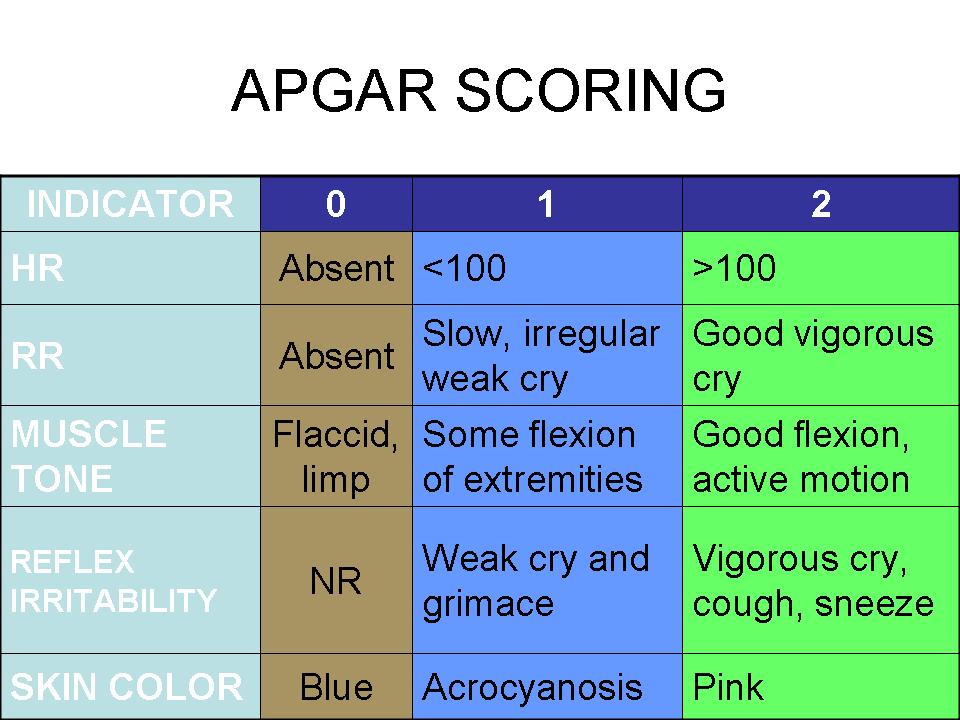APGAR Scores and Cerebral Palsy
Not everyone is familiar with the function or even importance of the APGAR score. In all likelihood, anyone who has ever been in the hospital with a newborn is familiar with this part of the statistical birth data, but unless you have been faced with the possibility of a birth defect, you probably don’t understand its relationship to cerebral palsy.

Understanding the Apgar Score
The Apgar score is a measurement doctors use in order to assess the status of a newborn baby and the response he or she has to resuscitation. Although there has been some inappropriate use of the Apgar score for term infants, the data on its significance in premature infants is inconsistent. There are limitations to the Apgar score making it an inappropriate means for the establishment of asphyxia. The score that appears during resuscitation is different than the one that appears when an infant is breathing on its own.
An infant’s condition immediately after birth is the basis for the Apgar score, and when it is properly used is an essential tool for a standardized assessment. This score also provides a mechanism for doctors and nurses to record the infant’s transition from the fetal to neonatal stage. Gestational age, medications of the mother, cardiorespiratory and neurologic conditions all affect the Apgar score.
The Apgar scoring system was devised in 1952 as a rapid means to assess a newborn infant one minute after birth, and a second system came into use in 1958 that provided a standard means to assess infants after their birth. There are five components that comprise the Apgar score:
- Heart rate
- Respiratory effort
- Muscle tone
- Reflex irritability
- Skin color
Each of the above components is assigned a score of 0, 1, or 2 and reported at both one and five minutes after the baby’s birth.
Cerebral Palsy Diagnosis and the Apgar Score
In the past, the diagnosis of cerebral palsy was contingent upon an Apgar score of three or less five minutes after birth. However, a low Apgar score on its own is not necessarily an indicator of cerebral palsy. The disruption of blood flood to the fetus or within the uterus is seldom absolute which makes the term asphyxia too general in nature. Thus, other more precise definitions are required to assess the newborn infant and proper management of the child outside the womb.
While the use of the Apgar score can be a helpful tool in determining an infant’s potential for CP, it is not an absolute because of its limitations. One of the reasons for this is that there are several factors that may have an influence on the Apgar score that include, but are not limited to, the following:
- Drugs
- Trauma
- Infections
- Hypoxia
- Congential anomalies
- Premature birth
- Hypovolemia
There was a study conducted in Norway on more than 500,000 babies. The results of this study showed there was a high incidence of cerebral palsy in children with low Apgar scores and normal birth weight but only moderate incidences in children below normal birth weight. The study showed 0.1 percent of babies who had Apgar scores of ten had cerebral palsy at birth while ten percent of those who had scores of three or less were diagnosed with the condition at a later date.
Another interesting fact shows that babies with low birth weight but high Apgar scores have a four percent chance of developing cerebral palsy compared to 17 percent when the Apgar score is low.
Are You Worried About Your Child’s Low Apgar Score?
If you have concerns about your child’s low Apgar score, or believe that medical malpractice may have played a role in your child’s condition, we urge you to speak to a trusted birth injury lawyer sooner than later. We understand that a lawsuit is the last thing on your mind right now, but you owe it to your child to give him or her the best chance at the life they deserve. Let your attorney investigate the facts of your case and advise you of your options.
